EVGA GQ Series 750W PSU Review
EVGA teamed up with FSP once again to produce the new GQ line, which is one step below the highly popular G2 series. The four GQ PSUs feature 80 Plus Gold efficiency and semi-modular cabling, promising quiet operation.
Why you can trust Tom's Hardware
A Look Inside And Component Analysis
Parts Description
Before proceeding with this page, we strongly encourage you to a look at our PSUs 101 article, which provides valuable information about PSUs and their operation, allowing you to better understand the components we're about to discuss. Our main tools for disassembling PSUs are a Thermaltronics soldering and rework station, and a Hakko 808 desoldering gun.
| Primary Side | |
|---|---|
| Transient Filter | 4x Y caps, 2x X caps, 2x CM chokes, 1x MOV |
| Inrush Protection | NTC Thermistor & Diode |
| Bridge Rectifier(s) | 1x |
| APFC MOSFETs | 2x Infineon IPA60R125CP (650V, 16A @ 100 °C, 0.125 ohm ) |
| APFC Boost Diode | 1x STMicroelectronics STTH8R06FP (600V, 8A @ 100 °C) |
| Hold-up Cap(s) | 1x Rubycon (450V, 390uF, 3000h @ 105 °C, MXG) |
| Main Switch | 1x STMicroelectronics STF25N80K5 (800V, 12.3A @ 100 °C, 0.26 ohm) |
| Reset Switch | 1x CET CEF03N8 (800V, 2A @ 100 °C, 4.8 ohm) |
| APFC/Switching Controller | FSP 6600 IC |
| Topology | Primary side: Active Clamp Reset Forward Secondary side: Synchronous Rectification & DC-DC converters |
| Secondary Side | |
| +12V MOSFETs | 2x |
| 5V & 3.3V | DC-DC Converters: 6x Infineon IPD031N03L G PWM Controller: 2x FSP6601 |
| Filtering Capacitors | Electrolytics: Nippon Chemi-Con (105 °C, KY, KZE) Polymers: FPCAP (1x), Nippon Chemi-Con (1x) |
| Supervisor IC | Weltrend WT7527 (OVP, UVP, OCP, SCP) |
| Fan Model | Protechnic Electric MGA13512XF-O25(135mm, 12V, 0.38A, Fluid Dynamic Bearing) |
| 5VSB Circuit | |
| Rectifier | 1x STPS20L60CT (60V, 20A @ 140 °C) |
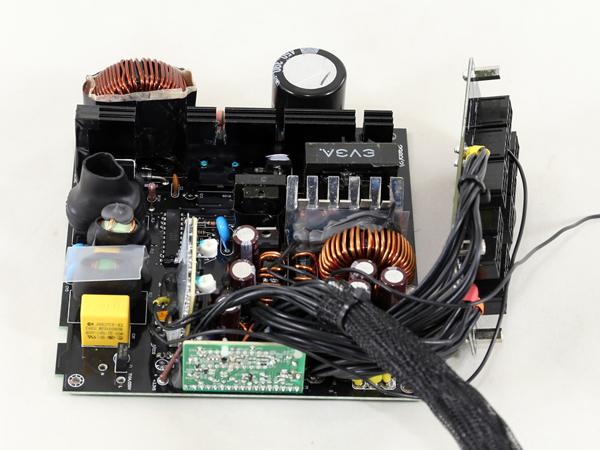
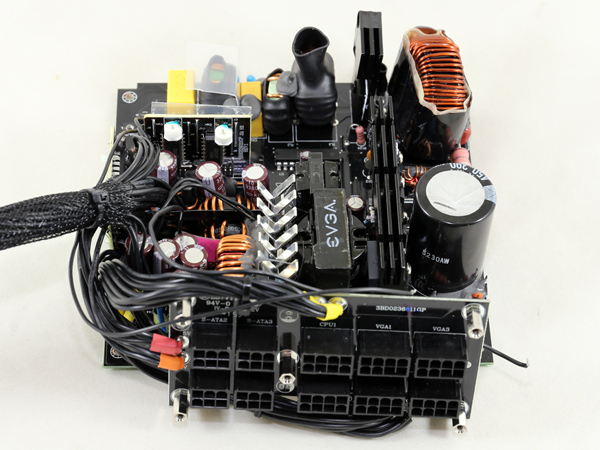
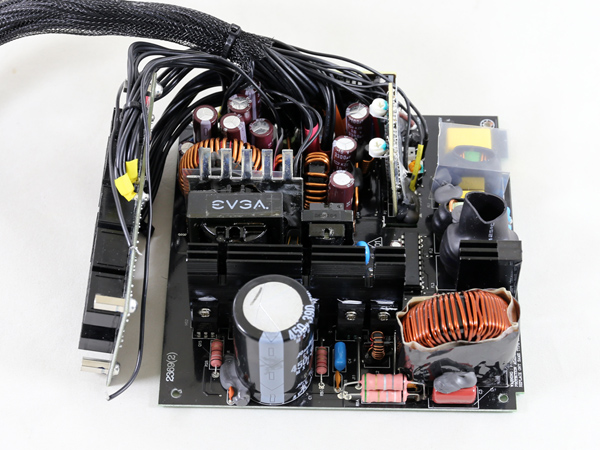
This platform uses an Active Clamp Reset Forward (ACRF) topology, which allows for high efficiency with the use of fewer components compared to full- and half-bridge topologies with LLC converters. We've seen this implementation before in Rosewill's Capstone G1200. A synchronous design is used for the secondary side's +12V rail, while the minor rails are regulated by two DC-DC converters. All filtering capacitors are provided by Nippon Chemi-Con, enhancing this platform's reliability.
The ACRF topology provides high efficiency at lower cost since there's no need for an LLC resonant converter or (low RDS-on) FETs. In this case, we have a single power switch ACRF design, where one FET acts as the main switcher (Q1), while a second one serves as the reset switch (Q2). The reset switch's job is to disconnect the APFC converter's bulk capacitor when Q1 is active. When Q2 is open, power is transferred from the primary to the secondary side. This design allows for almost lossless switching of the Q1 FET, as its drain voltage is very low when it's off. A single Infineon SPW60R099C6 FET acts as the Q1 switch, and a Fairchild FQPF3N80C is the Q2 reset switch.


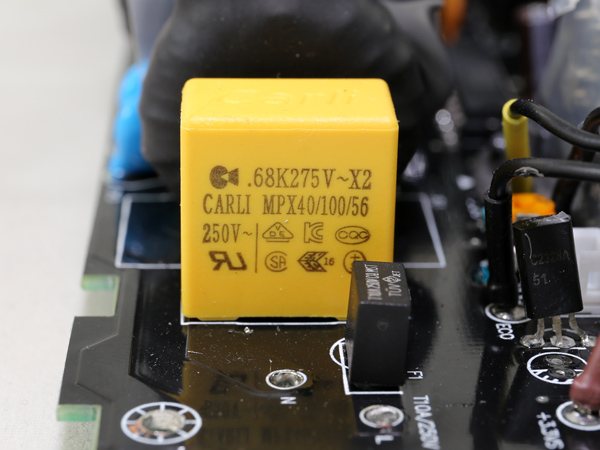
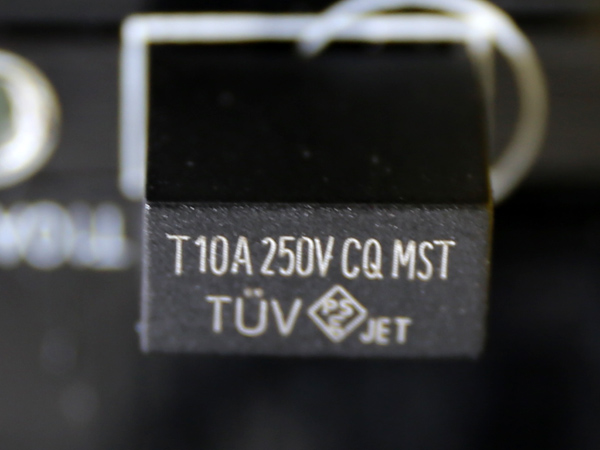
The first part of the transient filtering stage begins at the AC receptacle with a couple of Y caps. It continues on the mainboard with two Y and a pair of X caps, along with two CM chokes. Unfortunately, there is no MOV (the part that protects the PSU and the system it feeds from power surges).


A small NTC thermistor provides protection against large inrush currents. It is bypassed by a diode instead of the electromagnetic relay that we usually find in Gold- and higher-rated PSUs.
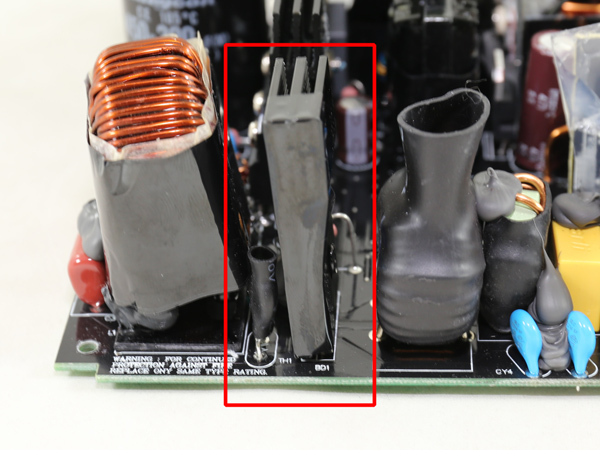
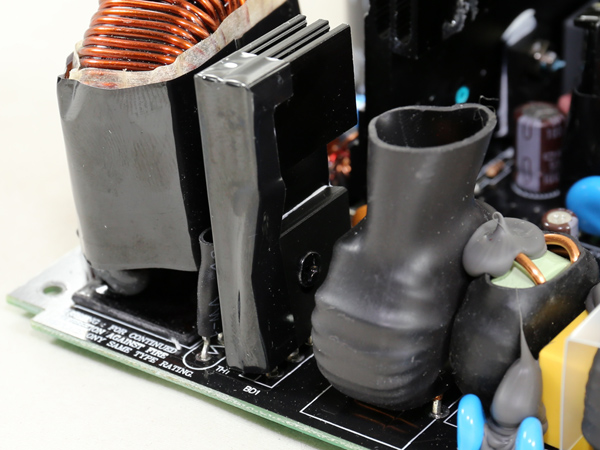
The single bridge rectifier is bolted on a dedicated heat sink.

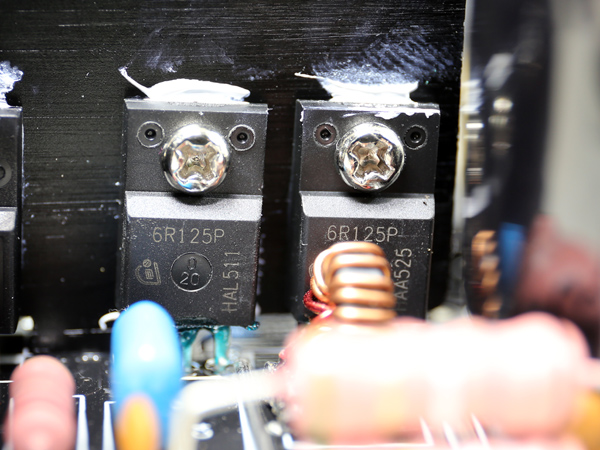
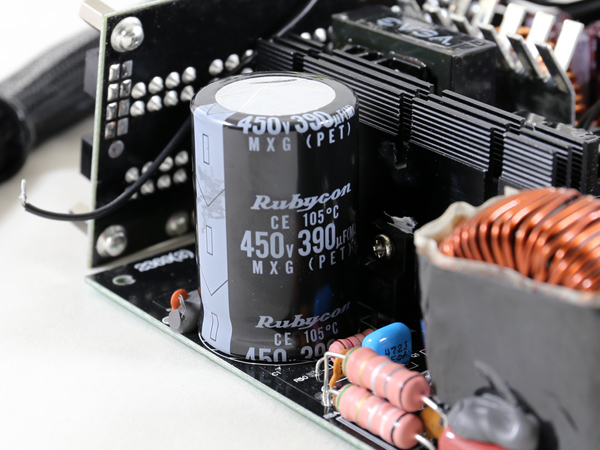
In the APFC converter, two Infineon IPA60R125CP FETs are used along with a single STMicroelectronics STTH8R06FP boost diode. The single bulk cap is provided by Rubycon (450V, 390uF, 105 °C); although its capacity is low, thanks to the ACRF topology, it provides a pretty long hold-up time.
Get Tom's Hardware's best news and in-depth reviews, straight to your inbox.

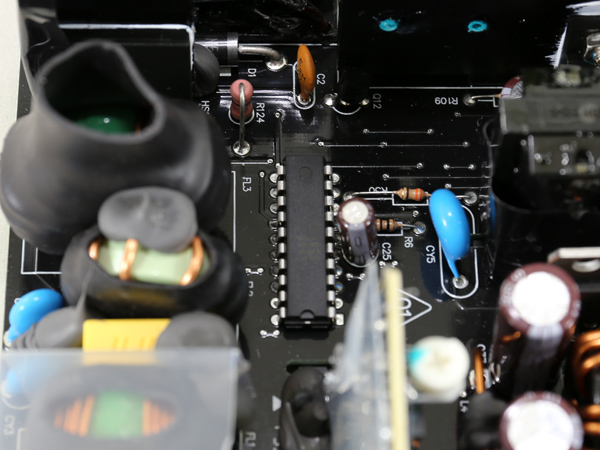
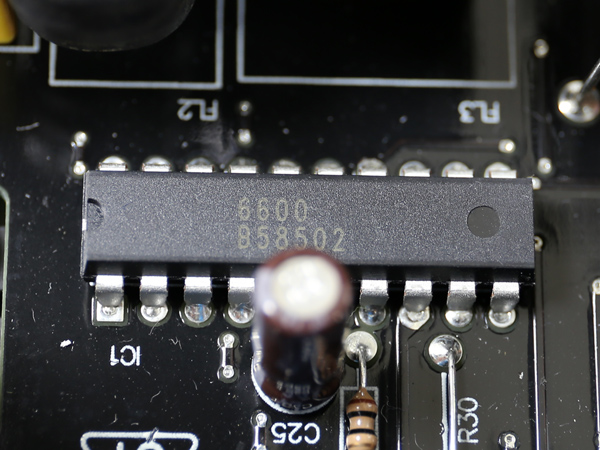

The main switch is an STMicroelectronics STF25N80K5 FET and the reset FET is a CET CEF03N8. We also find a CET CEF02N7G FET on the other side of the primary heat sink, though it appears to interact with the 5VSB circuit. The combo PFC/PWM switch is an FSP6600, which is soldered on the component side of the mainboard.
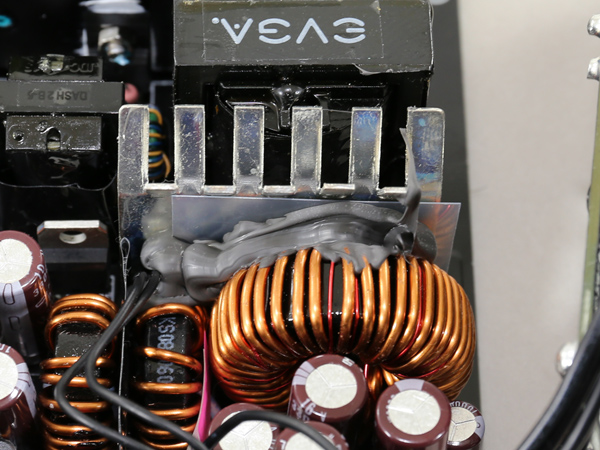
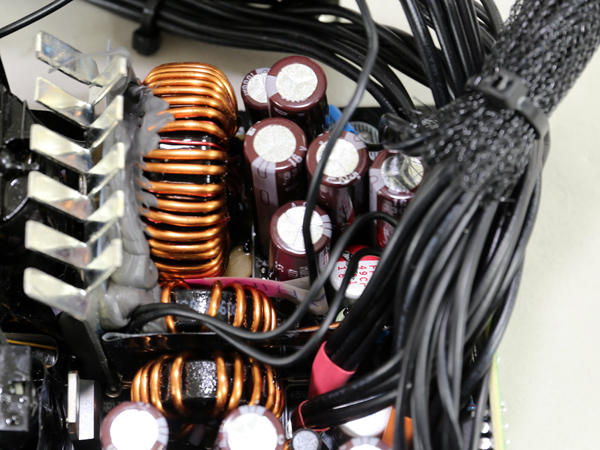

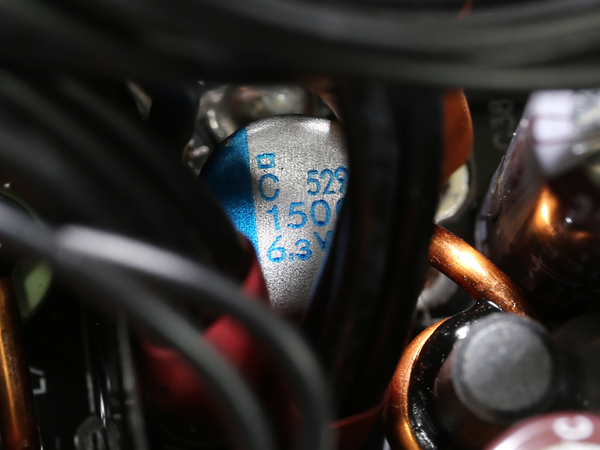
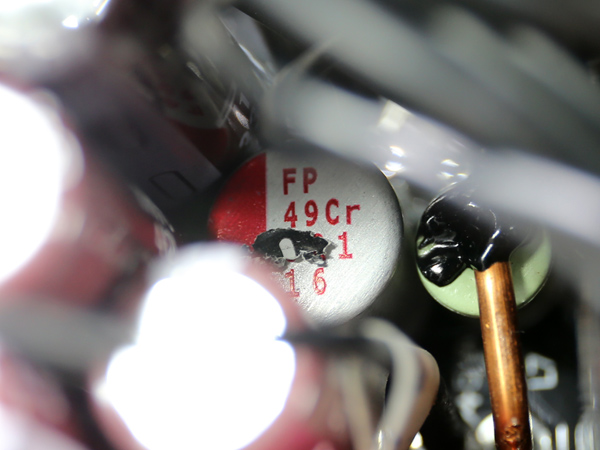
The +12V FETs, two in total, are installed on a small heat sink. Unfortunately, we aren't able to identify them. All filtering capacitors on the secondary side are provided by Nippon Chemi-Con and are rated at 105 °C. We also find two polymer caps, one by FPCAP and one by Chemi-Con. Indeed all caps in this PSU are by Japanese manufacturers, as EVGA states.
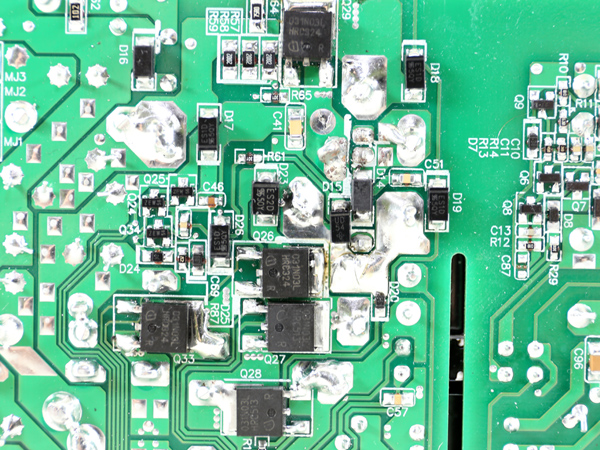



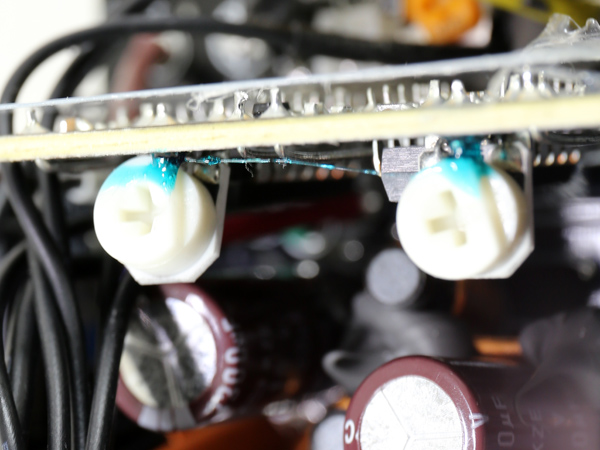
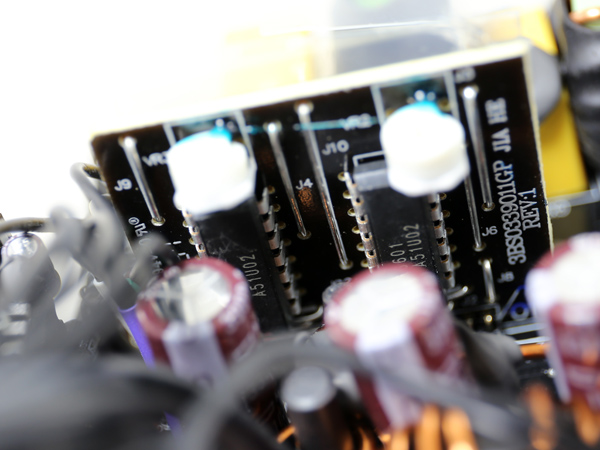
The parts that rectify the minor rails are installed on the solder side of the mainboard. In total, six Infineon IPD031N03L G FETs are used and their PWM controllers are two FSP6601 ICs, with the latter installed on a vertical board in the secondary side. Above the PWM controllers are two pots (potentiomenters) with unknown, at least to us, functionality.
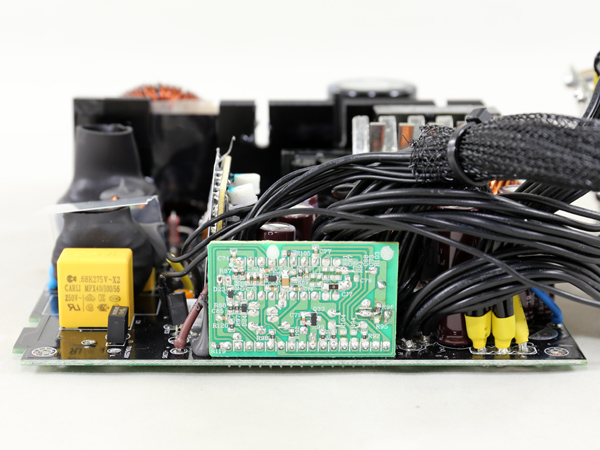



The supervisor IC is a Weltrend WT7527, which supports OCP for up to two +12V rails (even though this PSU only has one).
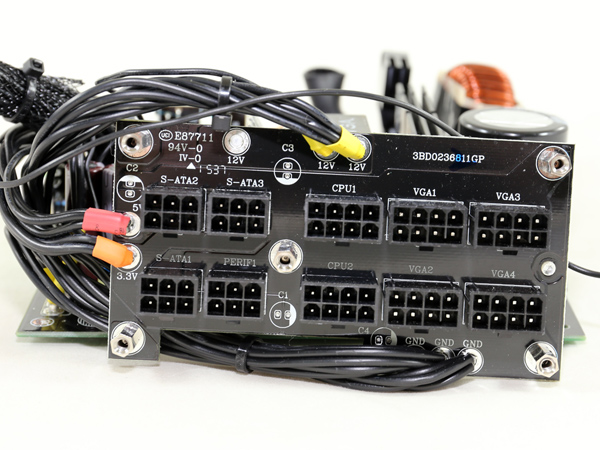



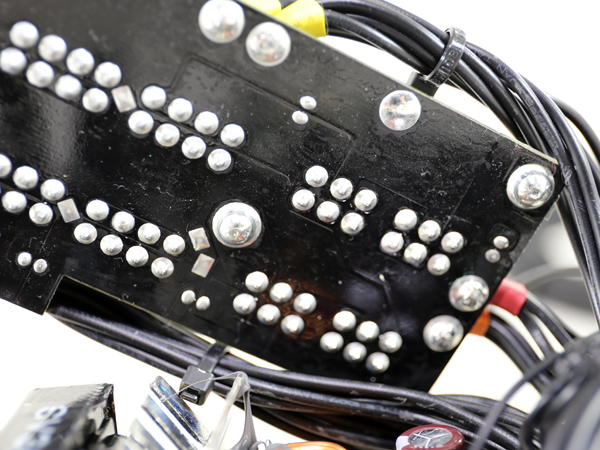
At the front side of the modular PCB is free space for installing additional filtering caps, though EVGA apparently decided it didn't need them. That's a shame, since this platform doesn't have good ripple suppression.
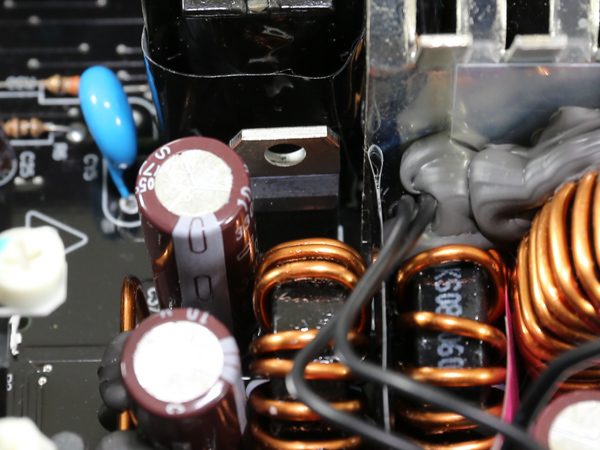
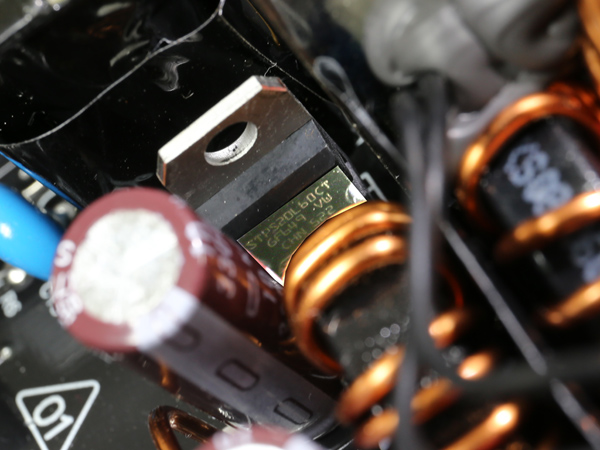
The 5VSB rail is rectified by an STPS20L60CT SBR (Schottky Barrier Diode).
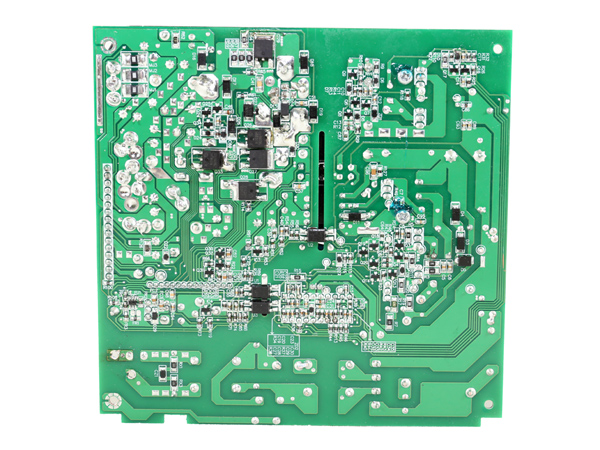
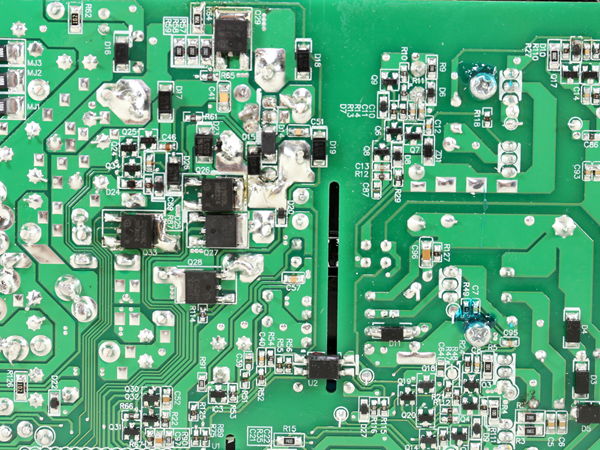
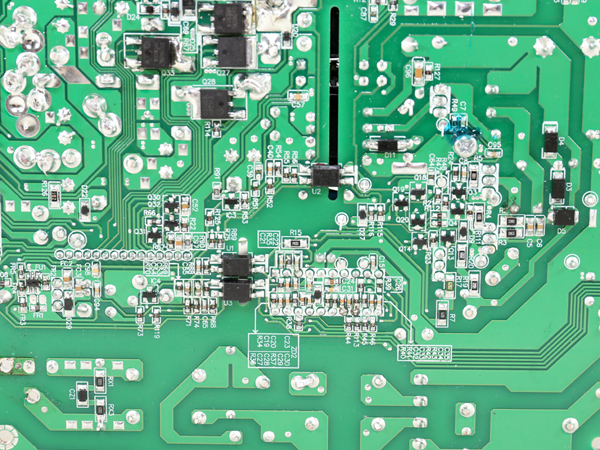

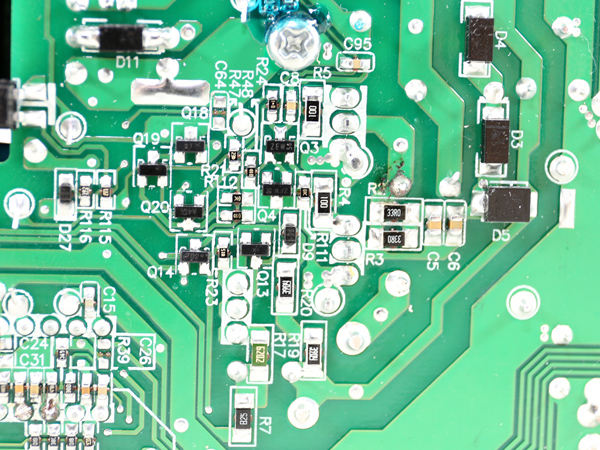
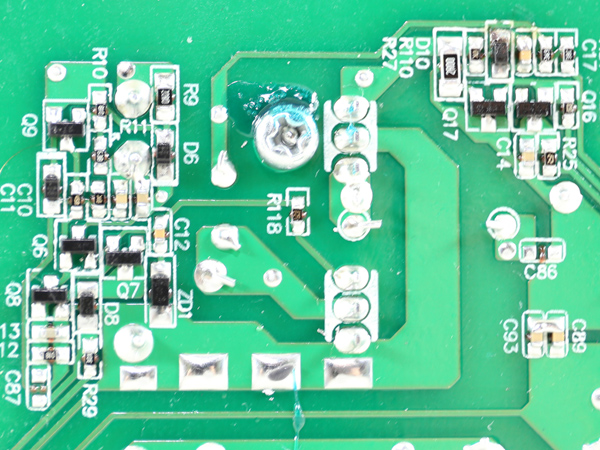
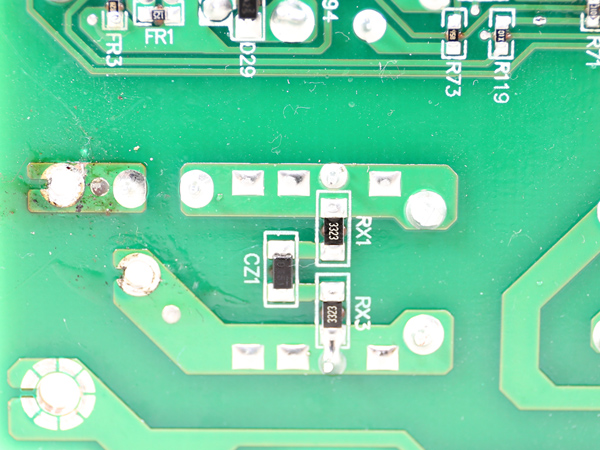

Soldering quality is pretty good, as is usually the case in FSP products.
On the solder side of the PCB, aside from the DC-DC converters, we also find some interesting parts, including three shunt resistors under the +12V island. Normally these resistors are used by the OCP circuit. But there's only one +12V rail on this unit, so the shunts aren't exploited.
The fan is made by Protechnic Electric and its model number is MGA13512XF-O25 (135mm, 12V, 0.38A). It's a high-quality fan, and because of the Fluid Dynamic Bearing it uses, it should last a long time. The only problem is that the fan is very noisy at high speeds and its control circuit is pretty aggressive when the operating temperature or the load applied to the PSU increases.
Current page: A Look Inside And Component Analysis
Prev Page Packaging, Contents, Exterior And Cabling Next Page Load Regulation, Hold-Up Time And Inrush Current
Aris Mpitziopoulos is a contributing editor at Tom's Hardware, covering PSUs.
-
10tacle Huh. Johnny Guru gave two variants of this PSU series recommended ratings back in Nov. & Dec (650, 850). I saw a 650W on sale at NewEgg last December for $50(US) after rebate and almost recommended it to a friend, but I didn't as I hadn't seen a JohnnyGuru review on the GQ series yet (they gave it a 9.4). They also gave the 850W version a 9.2 rating back in November.Reply
Not sure what happened with this 750W example, but it sounds more like what one would expect with a Corsair CX750 example. Definitely not the same results that Johnny Guru got with two different GQ variants. -
Aris_Mp The lower capacity GQ models use a different platform from the higher capacity ones (850W and more).Reply
The design of the 650 and 750 GQ models doesn't allow for better performance, especially in ripple performance. -
dstarr3 Eh, I'd stick with the G2 series. That's a lot more quality for only a small price premium. And really, the PSU is probably the worst place to cut costs in a system build.Reply -
basroil Oh god, another PoS EVGA unit that shares a similar name to the spectacular G2... I can see a flood of "my graphics card has coil whine", "my computer constantly crashes", and "my headphones have static/popping (only when playing games)" posts in the forum soon...Reply -
joz ReplyEh, I'd stick with the G2 series. That's a lot more quality for only a small price premium. And really, the PSU is probably the worst place to cut costs in a system build.
Agreed. G2 550 and 650's are great. And the P2 750+ if you need that sort of power are great too. But these...."craptacularripplefail," units EVGA is tossing out is really hurting their image. I understand market catering and such, but they need to rethink their strategy. They aren't going to win any price/perf races while Corsair can continue to throw their shitty cx units out the window to customers. And EVGA I hold to higher standards then Corsair, so its kind of a shame to see the performance of these lower quality power supplies. -
Dark Lord of Tech I would take the EVGA G2 , P2 , T2 over any other POWER SUPPLIES including Seasonic.Reply -
jonnyguru ReplyAgreed. G2 550 and 650's are great. And the P2 750+ if you need that sort of power are great too. But these...."craptacularripplefail," units EVGA is tossing out is really hurting their image. I understand market catering and such, but they need to rethink their strategy. They aren't going to win any price/perf races while Corsair can continue to throw their shitty cx units out the window to customers. And EVGA I hold to higher standards then Corsair, so its kind of a shame to see the performance of these lower quality power supplies.
Unfortunately, you can't be too profitable selling only niche higher end product. At some point, if you want the board of directors to let you continue putting out power supplies, you have to put something out that can do volume. The B2 Series, The GQ Series, etc. Don't like them? Don't buy them. Is it hurting their reputation? No. Not as long as higher end units like the G2, P2, etc. continue to be solid. But if they start to slip for whatever reason, then you can say their reputation is in jeoprady. Seriously. Hardly anybody judges the Corvette because of the Chevy Spark (well... maybe some Ford fanboys, but still). -
Dark Lord of Tech I like the GQ's and recommend them , also love the Corsair RMx series and recommend those too.Reply -
PureBlackFire ReplyHuh. Johnny Guru gave two variants of this PSU series recommended ratings back in Nov. & Dec (650, 850). I saw a 650W on sale at NewEgg last December for $50(US) after rebate and almost recommended it to a friend, but I didn't as I hadn't seen a JohnnyGuru review on the GQ series yet (they gave it a 9.4). They also gave the 850W version a 9.2 rating back in November.
Not sure what happened with this 750W example, but it sounds more like what one would expect with a Corsair CX750 example. Definitely not the same results that Johnny Guru got with two different GQ variants.
well, this is hardly the first time an FSP platform performed reasonably well at 650 watts and sucked at 750. sure it won't be the last either. as for the 850, like Aris said, based on a different (better) design.
-
10tacle Reply17373323 said:well, this is hardly the first time an FSP platform performed reasonably well at 650 watts and sucked at 750. sure it won't be the last either. as for the 850, like Aris said, based on a different (better) design.
That's just not right. A certain series should be of the same quality across the series offerings. There's a reason people shop for different series for their needs (budget vs. quality, etc.). Hell it's complicated enough already just trying to keep up with each OEM series line offerings and their quality tiers. I mean we all know the general quality difference between Corsair's CX line and EVGA's G2 line.
